How to fix worn down front and back teeth (2 steps with pictures)
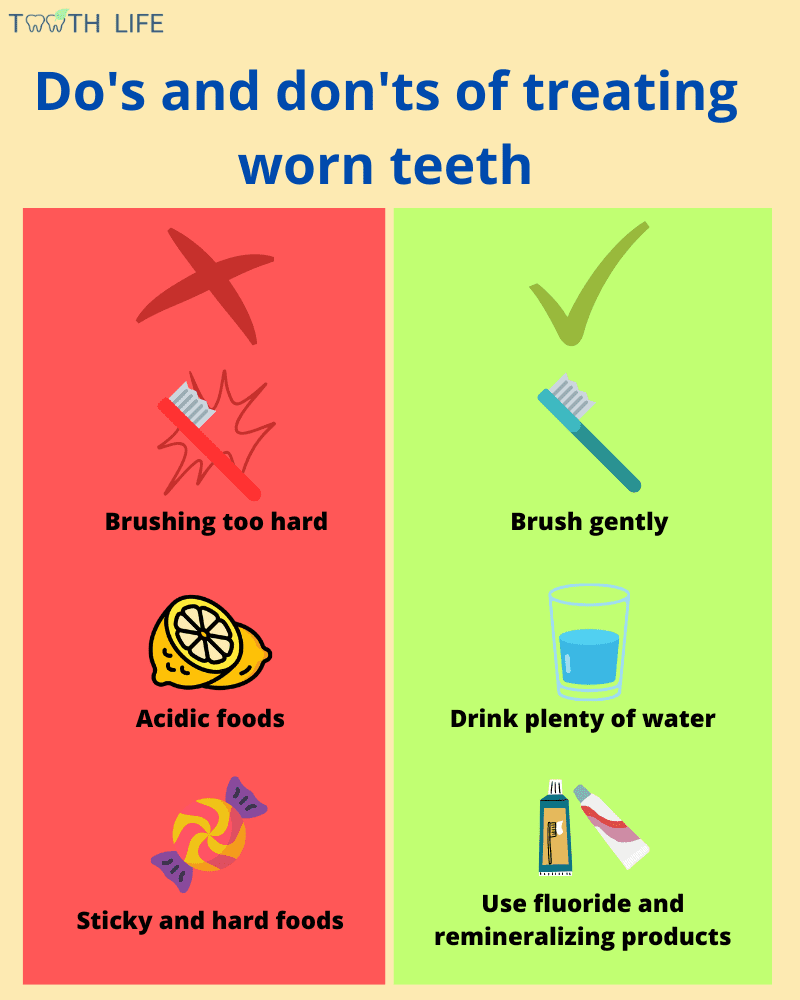 Do you think your teeth are wearing down?
Do you think your teeth are wearing down?
If so, you're not alone. Tooth wear is a common problem caused by a variety of factors. But don't worry, there are ways to manage the damage and prevent it from getting worse.
In this article, we'll cover the two main steps to fix worn down teeth permanently: managing the risk factors and repairing the damage.
In this article:
1. The three most common causes of tooth wear:
2. The two steps you need to know to fix worn down teeth:
3. Complications if worn down teeth are left untreated:
4. How to prevent tooth wear after treatment?
The three most common causes of tooth wear:
Worn-down teeth can have many causes, and often, several factors work together to cause severe damage.The three primary causes of tooth wear are Attrition, Abrasion, and Erosion.
- Attrition: This occurs when teeth rub against each other excessively, leading to shiny, smooth surfaces called wear facets. It's often caused by bruxism — a harmful habit where you unconsciously grind or clench your teeth.
- Abrasion: This often happens when teeth are repeatedly brushed with abrasive objects, like a hard-bristled toothbrush, or exposed to hard foods and habits like biting on pens.
- Erosion: A chemical process where acids in the mouth strip minerals from the teeth. It can result from frequent vomiting, acid reflux, or excessive consumption of acidic and sugary drinks.
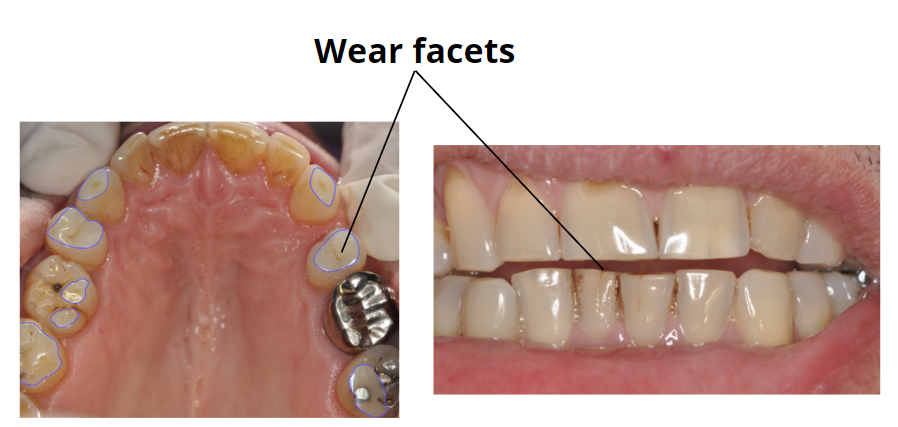
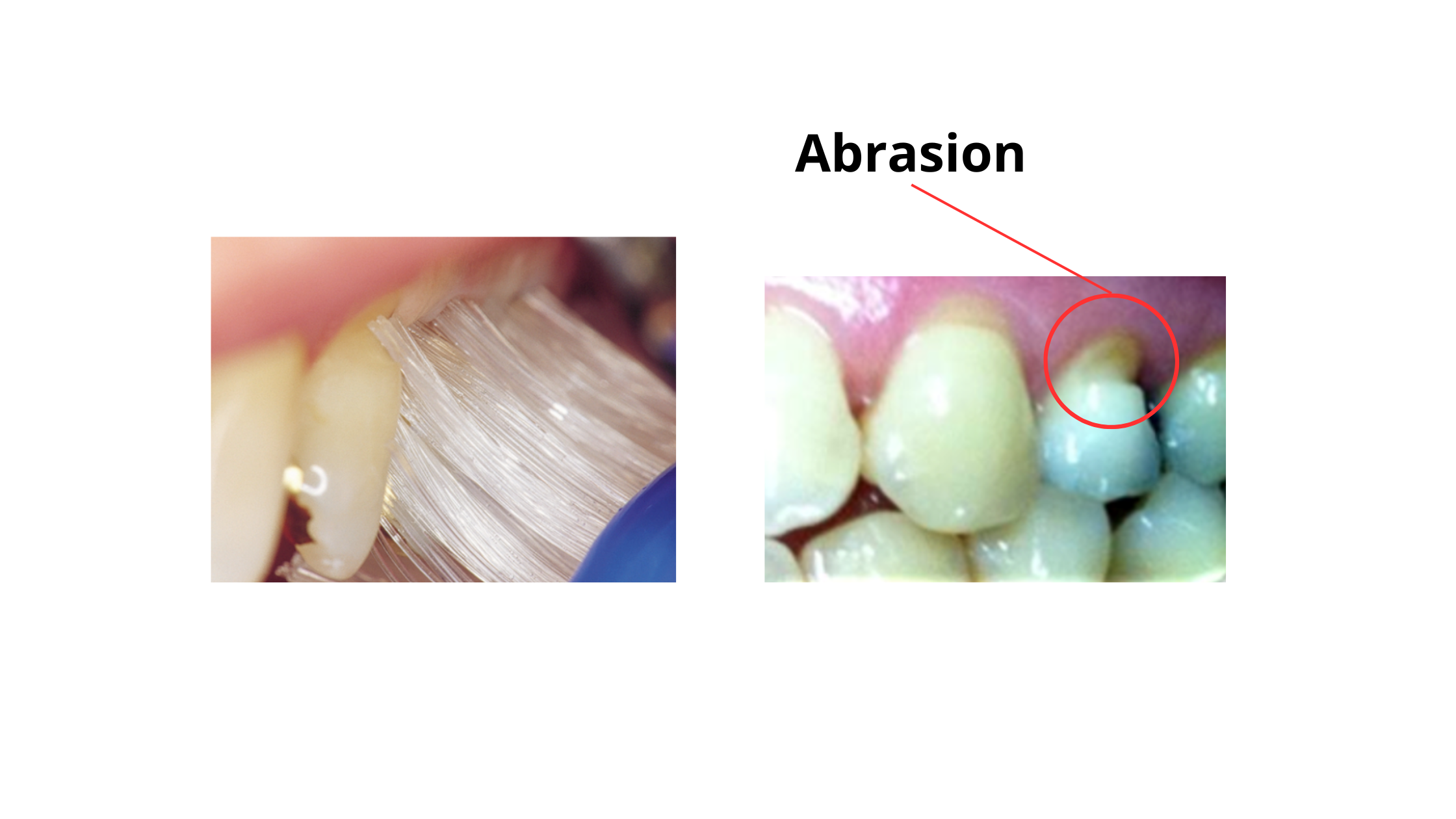
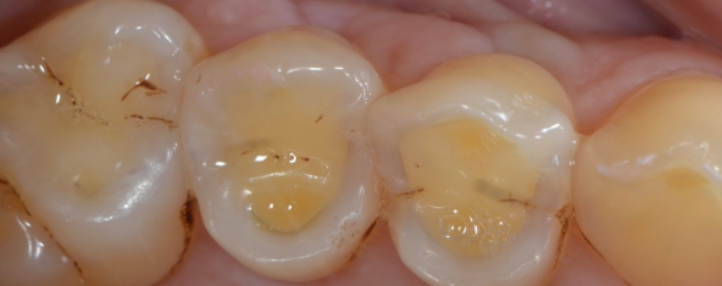
The two steps you need to know to fix worn down teeth:
There are two main steps in treating worn-down teeth:- Identifying and managing the risk factors
- Repairing the damage through restorative procedures
1. Identifying and managing the root cause:
To stop the damage, the first thing is to identify and eliminate the underlying cause. Without this step, your teeth may continue to wear down, and no treatment will be effective in the long term.
Depending on the specific cause, this may include:
1. Attrition:
If the wear is caused by repeated clenching or grinding, a mouthguard can help protect your teeth, especially at night.If your teeth are misaligned or crowded, orthodontic treatment may be needed to straighten them and help distribute chewing forces more evenly.
2. Abrasion:
Switch to a soft-bristled toothbrush and use a gentle, non-abrasive toothpaste.Avoid horizontal brushing and excessive pressure — instead, use light circular motions.
Also, avoid biting on hard objects like pens, ice, or your fingernails.
3. Erosion:
Stay hydrated and drink plenty of water throughout the day.Limit your intake of acidic and sugary foods or drinks that increase mouth acidity.
After consuming something acidic, wait at least 30 minutes before brushing to prevent further enamel loss.
Use a toothpaste that contains remineralizing ingredients, such as fluoride or hydroxyapatite.

2. Repair of worn teeth:
Once the causes of tooth wear are managed and the damage has stabilized, it’s time to consider treatment options to repair and restore your teeth.
The type of treatment will depend on which teeth are affected — whether it’s the front teeth, the back teeth, or both.
1. Front Teeth:
-
Veneers:
When only the front visible surfaces or the top edges of the teeth are affected (making the teeth appear shorter), dental veneers can be a great option.
They are highly aesthetic, made from tooth-colored ceramic, and are ideal for restoring front teeth that show when you smile. -
Composite Bonding:
Composite bonding also uses tooth-colored material, making it a good option for improving the appearance of worn front teeth.
It's a more affordable alternative to porcelain veneers.
The downside is that composite is more prone to staining over time — especially if you are a heavy coffee or tea drinker. -
Palatal Veneers:
These are similar to regular veneers, except they are bonded to the back side of the front teeth instead of the visible surface.
Palatal veneers are a suitable option when the wear is significant on the inside (palatal) surfaces of the front teeth and involves the top biting edges as well. - Crown:
When the front teeth are severely worn down and the damage affects all sides, a dental crown may be necessary to fully cover and protect the tooth.
It's often the best option to prevent further damage to weakened teeth.
Like veneers, crowns are custom-made and can be crafted from highly aesthetic porcelain materials.
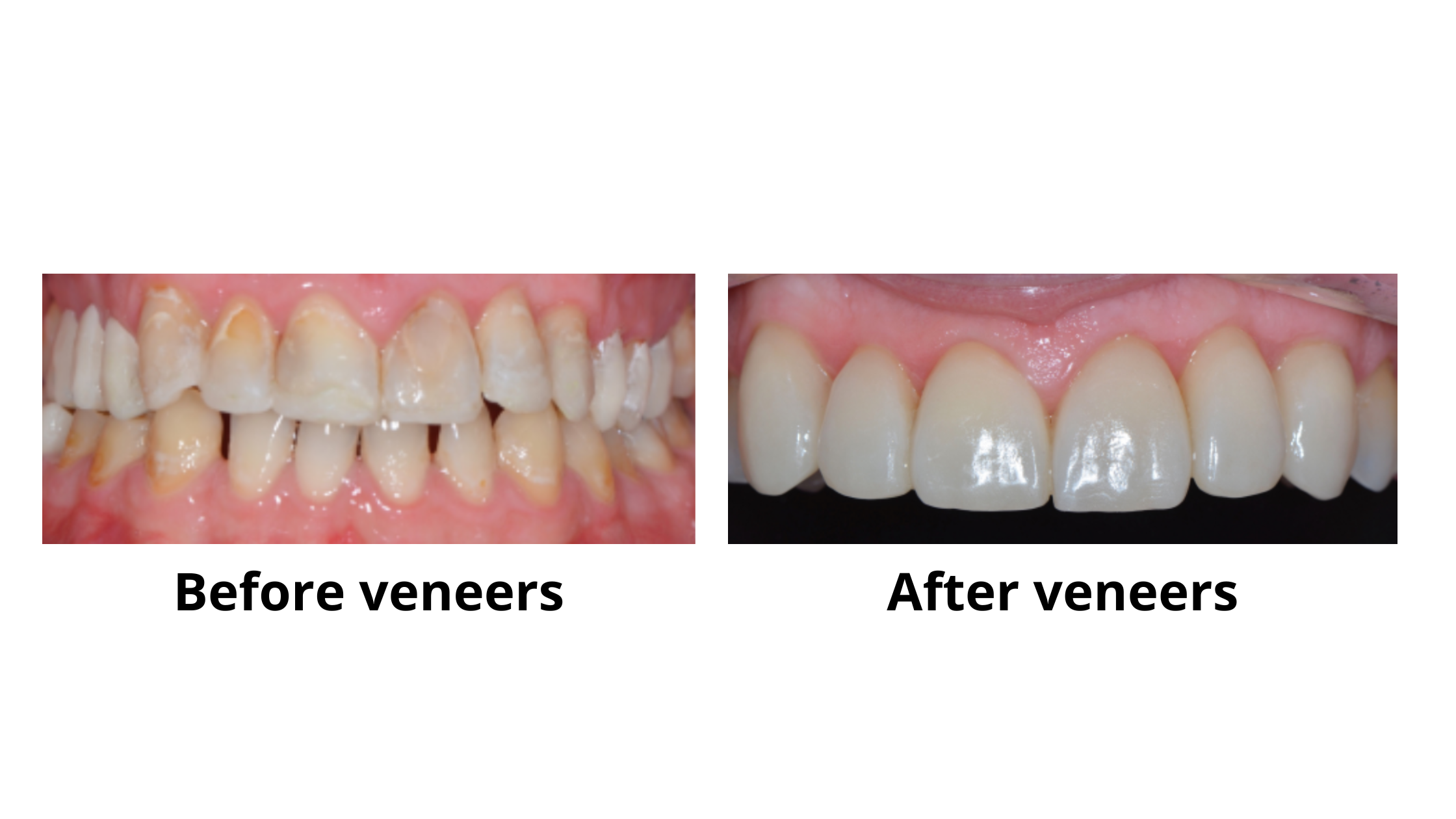
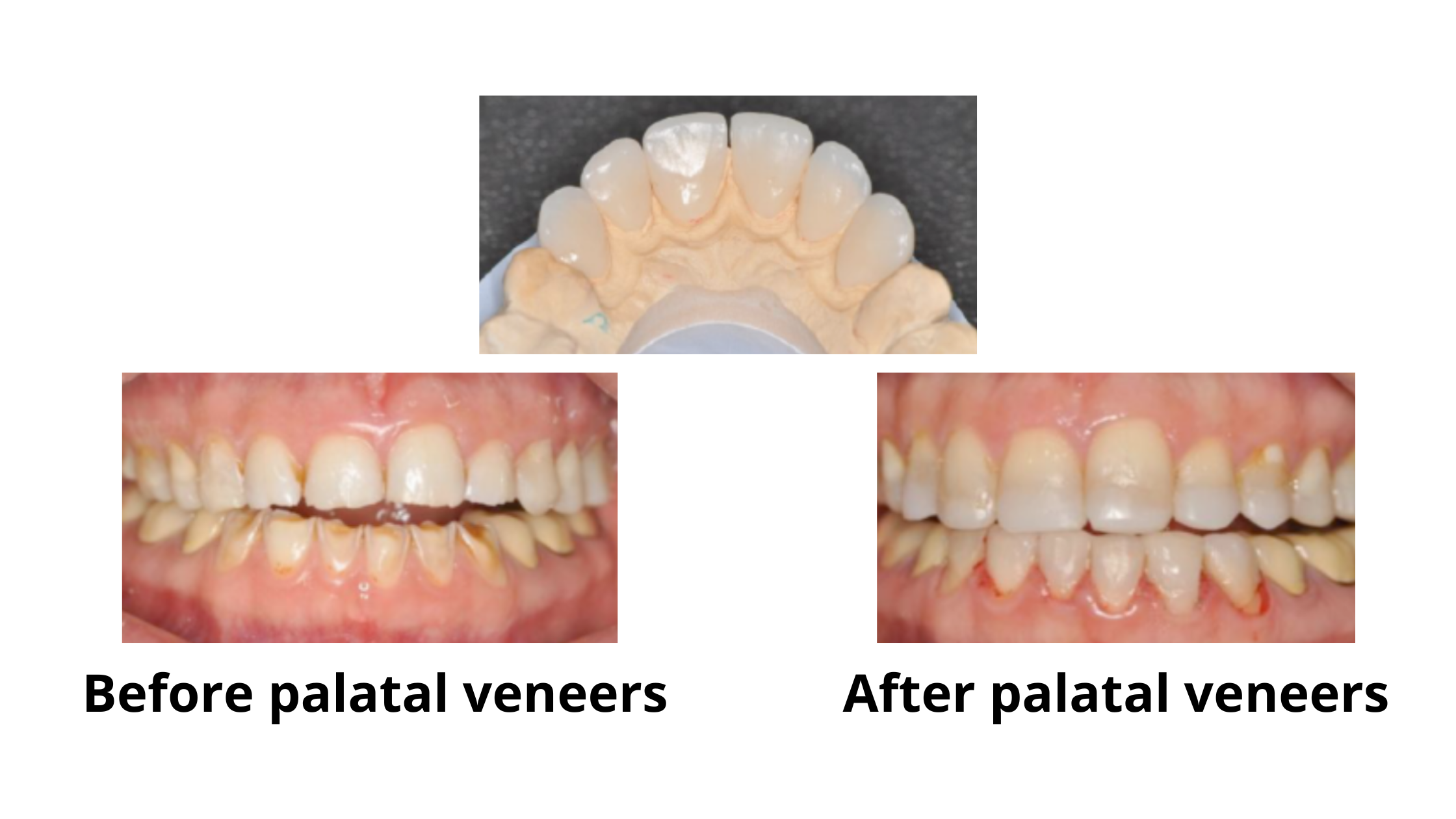
2. Back Teeth:
Depending on the extent of the damage, there are several options to restore worn-down back teeth:
- Onlay: A restoration that covers the chewing surface of the tooth, providing support and stability. It’s a more conservative option than a full crown because it requires less tooth preparation.
- Overlay: Similar to an onlay, but it extends over all the cusps (the pointed parts) of the tooth. It’s ideal for teeth with significant wear or damage that still have enough healthy tooth structure for bonding.
- Dental Crown: When the damage is extensive, a crown may be the best choice. It covers the entire tooth, providing strength, stability, and protection. Crowns for back teeth can be made from porcelain, metal, or a combination of both.

Complications if worn down teeth are left untreated:
If worn down teeth are left untreated, several complications can arise. These include:- Tooth sensitivity: As the protective enamel layer wears away, the underlying dentin layer becomes exposed, causing sensitivity to hot, cold, sweet, or acidic foods and drinks.
- Change in the appearance of your teeth: Your teeth may look yellow and discolored. This is because dentin is naturally darker and duller than enamel. You may also notice cracks and chips as the protective layers break down.
- Tooth decay: The exposed dentin is also more susceptible to decay, leading to cavities and potential tooth loss.
- Gum recession: Worn down teeth can lead to gum recession, where the gum tissue pulls away from the tooth, exposing the root surface. This can cause tooth sensitivity, as well as an increased risk of root decay and gum disease.
- Jaw pain and headaches: When teeth are worn down, the jaw muscles have to work harder to compensate for the loss of tooth structure. This can lead to jaw pain and even headaches.
- Malocclusion: Worn down teeth can alter the alignment of the teeth, causing a misaligned bite or malocclusion. This can lead to further wear and tear on the teeth, as well as difficulty chewing and speaking.
How to prevent tooth wear after treatment?
Here are some tips to prevent further wear on your teeth:- Use a soft-bristled toothbrush: Using a hard-bristled toothbrush or brushing too vigorously can damage tooth enamel and cause wear. So, it's best to use a soft-bristled toothbrush and brush gently.
- Correct brushing technique: Brushing with a circular motion and not applying too much pressure can help prevent further wear.
- Ask your dentist about fluoride supplements and remineralizing treatment: These can help strengthen your teeth, increase their resistance to acid attack, and prevent further damage. Ask your dentist if you can introduce a fluoride gel or a remineralizing product into your oral hygiene routine.
- Limit acidic foods and drinks: Acidic foods and drinks such as citrus fruits, sodas, and sports drinks can erode tooth enamel, leading to wear. Limiting these in your diet can help prevent further damage.
- Wear a mouthguard: If you grind your teeth or clench your jaw, wearing a mouthguard while sleeping can protect your teeth from further wear.
- Correct your bite: If your teeth are not aligned correctly, it can cause uneven wear on your teeth. Correcting your bite through orthodontic treatment can distribute the chewing forces evenly and prevent further wear.
- Visit your dentist regularly: Regular dental checkups can help detect wear on teeth early on and prevent further damage. Your dentist can recommend appropriate treatment or preventive measures to protect your teeth.
- Composite palatal veneers to restore a case of severe dental erosion http://www.dentalmedjournal.it
- The prevalence, etiology and management of tooth wear in the United Kingdom https://pubmed.ncbi.nlm.nih.gov/9338867/
- Tooth wear https://www.gov.uk/government/